Our diets have a profound effect on everything in our life. Food is more than just fuel. It can rev us up or calm us down. It can make us feel good, or make us feel terrible. It can help us heal or hinder our recovery from many injuries and conditions – including sciatica. Here’s my scientifically proven sciatica dietary suggestions, based on modern research, detailing the top 11 foods that help sciatica.
Aims of this post:
- To talk about how a sciatica diet plan can help your recovery
- To talk about some easy ways to include more foods that help sciatica in your diet
Before we dive in, please be aware that we are part of the Amazon Affiliate programme. This page may contain Amazon affiliate links, so if you choose to purchase a product for your sciatica that we recommend through a link on this page, we will receive a small commission at no extra cost to you. This helps us keep Overcome Sciatica alive! Thank you for your support. Please be assured that we only ever recommend products that we truly believe can help.
Sciatica Diet Plan to Accelerate Recovery
While a fully functional sciatica diet plan must be individualised to your preferences, daily routine and personal circumstances, there are some great foods that help sciatica which you should consider adding to your diet TODAY.
Some foods will help to ease sciatic nerve pain – while others do the opposite.
Making changes to your diet may seem like a small factor in your recovery; but in reality, adding these foods that help sciatica to your diet will make you feel significantly better, a lot quicker than you would without making these changes.
One of my patients came to see me with raging sciatica one time.
He had admitted to “falling off the diet bandwagon” after his sciatica had struck (this is so easy to do!) and felt that he was gaining weight as a result.
His diet comprised mostly of processed foods, like fries, pizza and crisps. (Click HERE for part 2 of this article, giving you all the Foods to Avoid with Sciatica)
After our conversation, we noticed a pattern where his sciatica would always feel worse in the evenings, after a typical processed ready meal that was high in fat and sugars, and I suggested that maybe his diet was contributing to the pain that he was feeling.
Sure enough, after making a few simple substitutions from bad foods to foods that help sciatica, he felt a significant improvement within a few weeks just from following this sciatica diet plan.
What’s so bad about processed foods?
Processed foods contain chemicals that can make inflammation worse. Inflammation will worsen the irritation around the affected nerve, making your sciatica worse.
You can read about why inflammation is our enemy in the battle against sciatica HERE.
As inflammation is a whole-body process, we can change it by focusing on factors that affect the whole body, rather than just the specific site of inflammation.
For this process, we need to take a “whole person” approach.
How can foods help sciatica?
There are a number of ways in which certain foods that help sciatica can reduce the symptoms associated with this condition.
Firstly, some foods can help to reduce the inflammation associated with sciatica through the actions of some enzymes within the body.
In this list of foods that help sciatica, a large proportion of them have made the list due to their anti-inflammatory and anti-oxidant properties. Both of these actions will help to reduce the symptoms associated with sciatica by reducing the inflammatory chemicals around the irritated nerve root.
Another mechanism of action in the foods in this sciatica diet plan is the fact that they are low calorie, healthy alternatives to junk food.
It is now known that being overweight can INCREASE the symptoms of sciatica, as more weight is being placed through the joints and discs in the spine, consequently overloading the affected area.
This can lead to a larger disc bulge and more symptoms as a result. In addition to this, if your sciatica is caused by osteoarthritis or “wear and tear”, the stress on the joints caused by excess weight will worsen symptoms. In fact, there is evidence to show that the more overweight someone is, the worse their sciatica pain is.
To read about the most effective way to lose weight when you have sciatica (without spending hours on the cross trainer) click HERE!
The foods in the sciatica diet plan will have the excellent side effect of reducing your weight when used as substitutes for unhealthy foods when taken in combination with a rounded diet, and should reduce your symptoms as a result. Not bad, eh?
Some of the foods that help sciatica that I talk about in the sciatica diet plan here will also be effective at helping to improve many other bodily functions, such as improvements in sleep, mood and general well-being.
To read more about how to improve your sleep when you have sciatica, click HERE!
With all of these benefits in mind, I hope you agree that adding some of these foods into your diet is a well worth a try. Read on to find out exactly what these “super-foods” are!
The Sciatica Diet Plan – Top 11 Foods that Help Sciatica by REDUCING Inflammation are:
Tomatoes
- Tomatoes are a food that helps sciatica due to their heaps of anti-oxidants, vitamins and minerals, found in all types of tomato.
- Adding small tomatoes to salads, or an extra freshly chopped tomato to cooking dishes is a great way to get some of these powerful fruits (yes, they are a fruit!) into your diet.
Green leafy veg (kale, broccoli, sprouts)
- Green leafy veg is a food that helps sciatica because it restores cellular health, vital in the battle against sciatic nerve pain.
- Packed with vitamins A, C and K. Green leafy veg should be an absolute staple in everyone’s diet.
- Not only does green leafy veg help with sciatica, it will also help to regulate weight, insulin spikes and blood sugar to minimise the risk of diabetes.
- Try adding tenderstem broccoli to a tasty Thai green curry one night.
Nuts (almonds, cashews, Brazil nuts)
- High in Omega-3, nuts also contains rare nutrients called “phytonutrients” which assist in the healing process.
- Nuts make the list of the top foods that help sciatica partly due to the great anti-inflammatory properties they contain, but also due to the ease with which you can add nuts to your diet.
- Try replacing your 11AM high-sugar snack with a handful of nuts (not salted!) to provide a great protein-packed mid-morning boost, and feel good about taking a step to beat sciatica at the same time!
Extra virgin olive oil
- Extra virgin olive oil makes the list of foods that help sciatica due to its strong anti-inflammatory compounds which help to fight inflammation and promote healing.
- We now know that olive oil is almost always a more healthy cooking catalyst than sunflower oil. Try making this switch to see great results today.
- If you don’t cook with oil much, you can try taking a spoonful in the morning before breakfast. Make sure you go for the extra-virgin variety.
Are You Looking for RAPID Relief from Sciatica?
My good friend, colleague and fellow international sciatica expert, Dean Volk, has a brand new sciatica relief video course available – and I’m delighted to be an official sponsor!
Check out Dean Volk’s “Kicking Sciatica OUT of the Butt!” Online Pain Relief Course Here!
I can proudly recommend Dean and his course for sciatica sufferers – because I’ve seen his incredible results first-hand. You can check out his course (and get lifetime access to the videos and bonus content) by clicking HERE.
Oily fish, like salmon, tuna, mackerel
- All oily fish are included as foods that help sciatica because of the Omega-3 content within these fish. Omega-3 has been shown to significantly mitigate inflammation. They are naturally full of essential fatty acids and packed with vitamins. Not to mention the great protein boost you’ll get from each portion.
- If you don’t like fish very much, you can get all the Omega-3 benefits of fish with a supplement.
- If you do like to eat fish, why not try a salmon stir-fry? From my experience, these dishes are quick, easy and you can include at least half of the ingredients in this list of foods that help sciatica in your recipe!
Bok Choi
- A really powerful addition to the list of foods that help sciatica, due to its high quercetin content (quercetin has been shown to lower inflammation and promote immunity).
- Containing 70 different anti-oxidant minerals, bok choi is not one to be missed. It is also a very versatile vegetable, and can be added to all sorts of dishes; not just Asian cuisine.
- My favourite dish with bok choi is shredded duck, with a few layers of bok choi fried off in some extra virgin olive oil. Yum!
Blueberries
- A real “super food” which has grown in popularity over the years. Contains quercetin which helps to fight inflammatory cells and reduce sciatic nerve pain.
- This berry is included as one of the foods that help sciatica not just because of its anti-inflammatory properties, but also because it can help your neurotransmitters start firing early in the morning when eaten as part of a balanced breakfast, setting you up for a great day ahead.
Pineapple
- One of my favourite fruits, the oh-so-sweet pineapple. The pineapple contains a digestive enzyme which helps to break down inflammatory cells within the body. Because of this excellent effect, and delicious flavour, pineapples are certainly one of the best foods that helps sciatica.
Coconut oil
- As well as extra virgin olive oil, coconut oil has been recently shown to have a diverse profile of health benefits when used in isolation or for cooking.
- Choose virgin coconut oil for the best anti-oxidant benefits. One of the most powerful foods that help sciatica on this list.
- Give this one a try – with your morning coffee, add a small teaspoon of coconut oil. Yes, it looks a bit gross as the oil rises to the top, but it is actually delicious. You’ll get the other great benefits of coconut oil along with the anti-sciatica effects too – better skin, improved blood pressure and reduced hunger cravings later in the day.
Hint: Adding turmeric or ginger into your meals when cooking has an excellent anti-inflammatory effect – these spices contain manganese and Vit B3 which aid in the anti-inflammatory process. You can read all about the beneficial effects of turmeric in this excellent article from Lyfe Botanicals.
It is important to remember that water plays an important role in every process in our bodies, including the healing process. Make sure you are drinking at least 2 litres (around 8 glasses) per day, as recommended by the NHS.
Part 2 of the Sciatica Diet – Foods to AVOID
Now that I’ve laid out my argument for positive foods to include in the sciatica diet, let’s now talk about foods to avoid when you have sciatica and how you can make healthier substitutions.
#1 – Sugar
Simple sugars, including sugary drinks, sweets, indulgent desserts, as well as hidden sugars like in table sauces, should definitely be avoided in a sciatica diet plan.
Quite simply, sugar significantly increases inflammation throughout the body when consumed in moderate to high doses and may also lead to type-2 diabetes when consumed in high quantities over prolonged periods.
Both of these problems will lead to a worsening of your symptoms.
Unfortunately, sugar is so easily obtainable in modern day society and is often used as a “secret” ingredient in many foods to improve their taste that it is difficult to avoid all together.
The best way to go about this is to take some time reading the labels of some of the staple foods from your weekly shop; you might be surprised at the sugar content in ready meals and certain sauces.
Cutting out fizzy drinks will significantly reduce your sugar intake if you are a regular fizzy-drinker. In some fizzy drinks, there is as much as 50g of sugar in one 500ml bottle!
For a better option, replace your usual can of coke with a fizzy water and lime – you’ll still get the fizz, just without the unnecessary sugar.
Here’s the good news – you can satisfy your sweet tooth by substituting your high sugar dessert with some squares of dark chocolate as a reduced-guilt alternative.
A substance found naturally in dark chocolate has the effect of reducing inflammation naturally, while you won’t find the same amount of sugar in dark chocolate as the milk variety.
Another thing to watch out for is your fruit juice and fruit intake. While fruits are usually considered “healthy” due to high vitamin and mineral content, there are often high concentrations of fructose within the sweeter fruits, which can has detrimental effects on weight and inflammation when consumed in large quantities.
Consider a less sweet alternative for the very sweet fruits in your sciatica diet.
#2 – Vegetable oil
Vegetable oil and sunflower oil are often used in cooking and can lead to worsening inflammation within the body.
Therefore, they hold a significant spot on this list of foods to avoid in your sciatica diet.
You’re not necessarily safe just because you don’t use vegetable oil when cooking, though; there are often high levels of vegetable oil found in mayonnaise and BBQ sauce, too. Always check the ingredients label when buying these products.
As an alternative when cooking, use either extra virgin olive oil or coconut oil.
Both of these products have strong anti-inflammatory properties and are considered far healthier to fry or bake with. Extra virgin olive oil can also be used on salads, while coconut oil adds that great taste to food when used in baking.
#3 – Fried, processed foods
Not just due to the fact that they’ve probably originally been fried in sunflower or vegetable oil, you should definitely steer clear from fried foods.
Fries, onion rings and processed meats as found in “turkey twizzlers” (gulp) are foods to avoid when you have sciatica due to their high fat and pro-inflammatory properties.
Bags of crisps/chips also fall into this category due to the unhealthy way that they are often prepared. They also won’t fill you up when eaten as a snack mid-morning, encouraging a binge later on and consequential weight gain.
A great alternative to crisps is home-baked kale chips.
To make this tasty alternatives to the sciatica foods to avoid: simply heat your oven to 180 degrees centigrade, grease a tray with extra virgin olive oil, spread a packet of kale over the tray and drizzle with a bit more olive oil. Then bake for 20 minutes – that’s it!
You can place these crisps in a bowl, and snack on them over the next few days as they tend to stay nice and crispy for a good length of time. They come under the “green leafy veg” category and will have anti-inflammatory benefits, reducing nerve root irritation and helping to bring down your symptoms. Not bad, eh?
#4 – Dough and flour
Pizzas, bread and pasta all contain gluten, which can be difficult for some people to digest and may increase levels of inflammation for others – because of these facts, they are also sciatica foods to avoid.
These foods also tend to lead to hunger quite quickly after a meal, due to their high carbohydrate content. If you remember from school: carbohydrates are a good energy source but they are used by the body very quickly, with any not used for energy is stored as fat.
A nice alternative to try for a few weeks is gluten-free alternatives; I have spoken to some patients who found that they were in fact suffering from a low level gluten intolerance and as such were suffering from weight gain and gastric issues without realising gluten was the cause.
By stopping gluten and replacing it with gluten-free bread and pasta, they found a huge array of unexpected benefits.
It’s just a thought, but maybe you can get similar benefits from this one simple change, too.
#5 – Artificial sweeteners
I know I said avoid sugary drinks and sodas, but if you’re about to reach for the Diet Coke, not so fast!
The sweeteners that make these drinks palatable may have negative effects on inflammatory processes within the body. There is also some research to show that these sweeteners actually increase sugar cravings (because your body expects sugar to come from something sweet – so is disappointed to not receive it from your diet beverage).
Fortunately, there are some tasty alternatives to artificial sweeteners that you can easily substitute into your diet.
If you use an artificial sweetener in your tea or coffee, instead try a teaspoon of honey mixed into your drink. You’ll get that gorgeous sweet taste while also preventing the negative effects of refined sugar and artificial sweeteners.
If you like a sugary drink more than anything, try this blended super-fruit smoothie instead:
Mix a banana, handful of strawberries, handful of blueberries, ice cubes and 2 tablespoons of Greek yoghurt and blend for 2 minutes for a smooth, sweet alternative. This smoothie is packed with “super foods” which can potentially reduce inflammation as well as keeping hunger at bay for longer.
Summary
I hope you have gained a little insight into how our diets can be a huge factor in our recovery (or not) from sciatica! I promise that this advice will help you to feel better in the long run, not just from your sciatica, but in your overall life too.
As always, thanks for reading. If you found this list of foods that help sciatica useful, please consider sharing so someone else suffering from sciatica can read our tips for recovery, too!
Top Tip: Grab a copy of my #1 Best-Selling book, Thriving Beyond Fifty for more health, wellness and recovery strategies!
Are You Looking for RAPID Relief from Sciatica?
My good friend, colleague and fellow international sciatica expert, Dean Volk, has a brand new sciatica relief video course available – and I’m delighted to be an official sponsor!
Check out Dean Volk’s “Kicking Sciatica OUT of the Butt!” Online Pain Relief Course Here!
I can proudly recommend Dean and his course for sciatica sufferers – because I’ve seen his incredible results first-hand. You can check out his course (and get lifetime access to the videos and bonus content) by clicking HERE.
The information on Overcome Sciatica should never be used as a substitute for medical advice from a doctor. Never put into action any tips or techniques from Overcome Sciatica without checking with your doctor first. Please see full terms of use here.

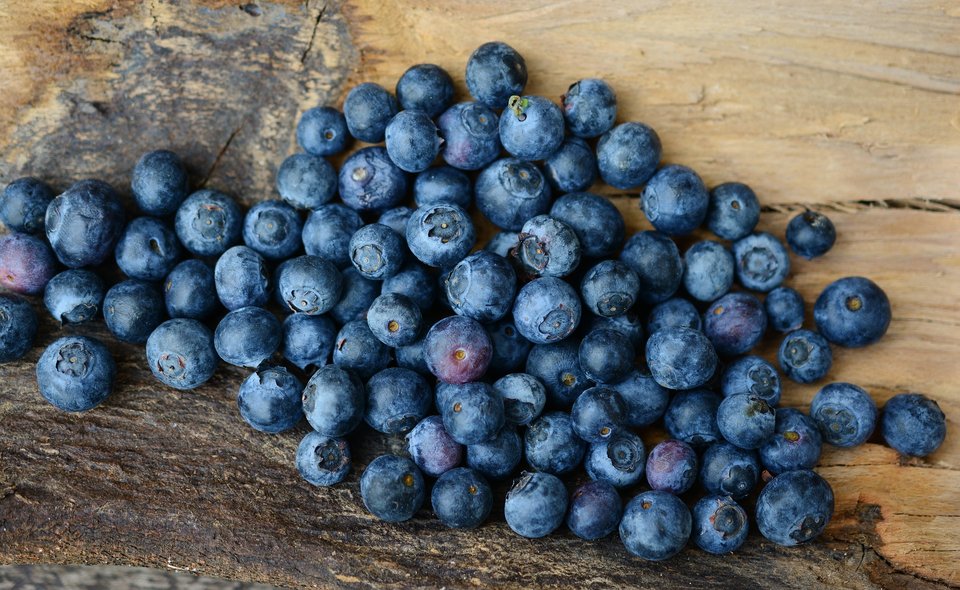

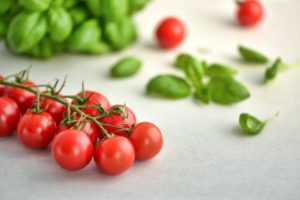
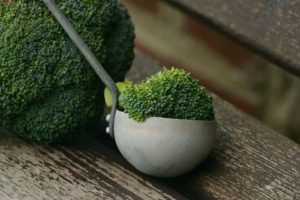
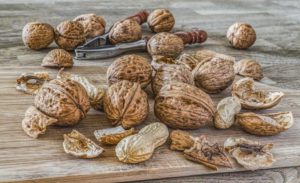


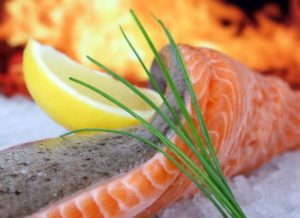
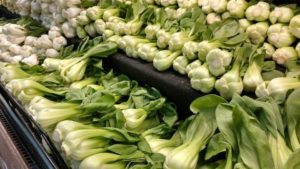
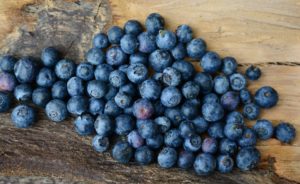


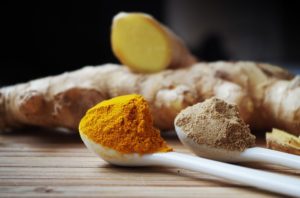







Absolutely fascinating – I had no idea diet would have any impact on sciatica so thanks, Will for this timely information and encouragement to review daily intake. Yvonne
Thank you very much for the information. It was important for me to know what food to avoid in order to relief my sciatic nerve pain. I used to eat most of the recommended food, however I need to add some of the healthy food you suggested as wel and lose some weight. I really appreciate the information. Thank you again
Thank you very much for the information. It was important for me to know what food to avoid to relief my sciatic nerve pain and need to add some of the healthy food you suggested to lose some weight. Thank you again
Amazingly helpful article – thank you so much. Really has helped me understand the process and what is happening to me